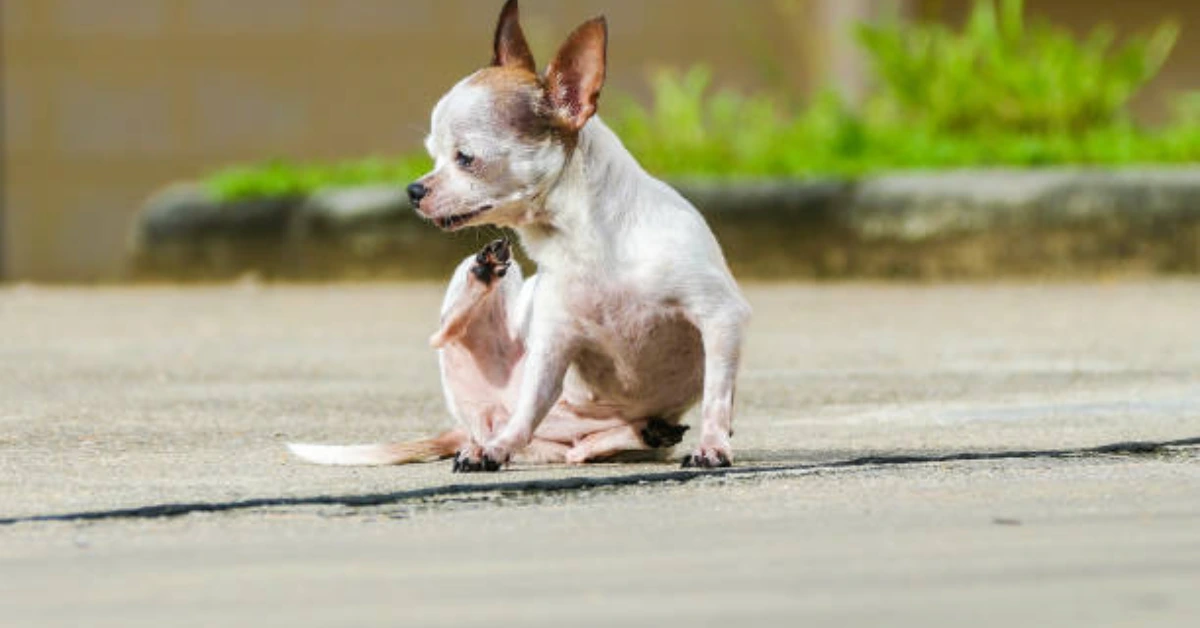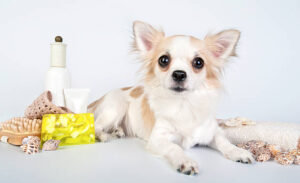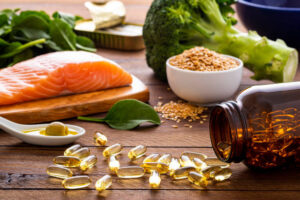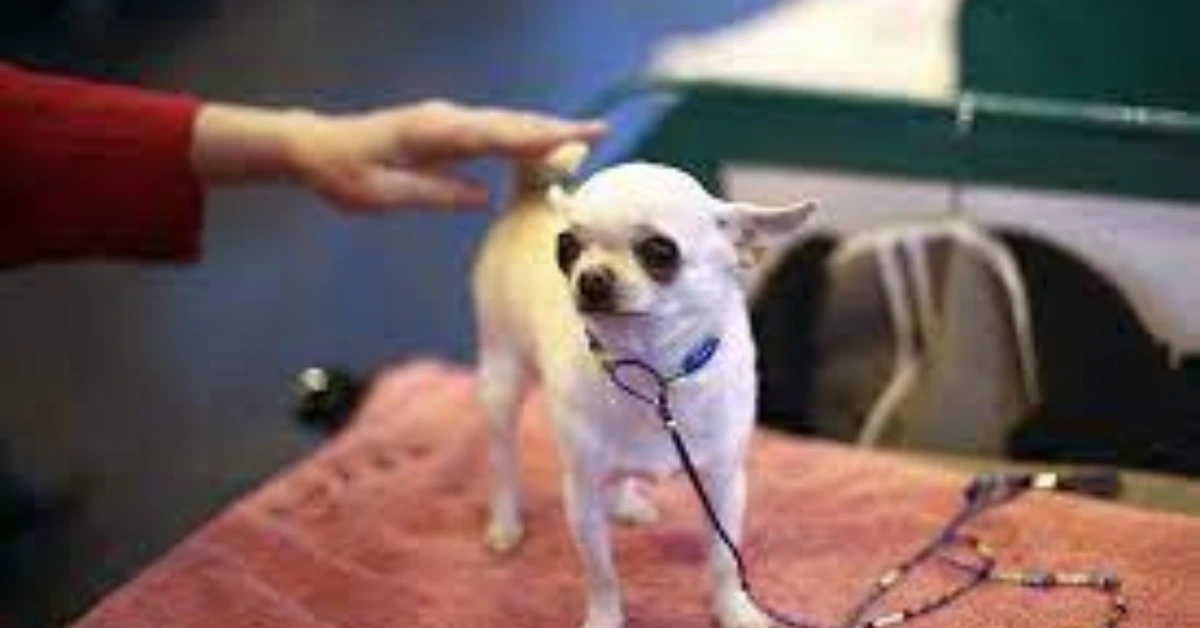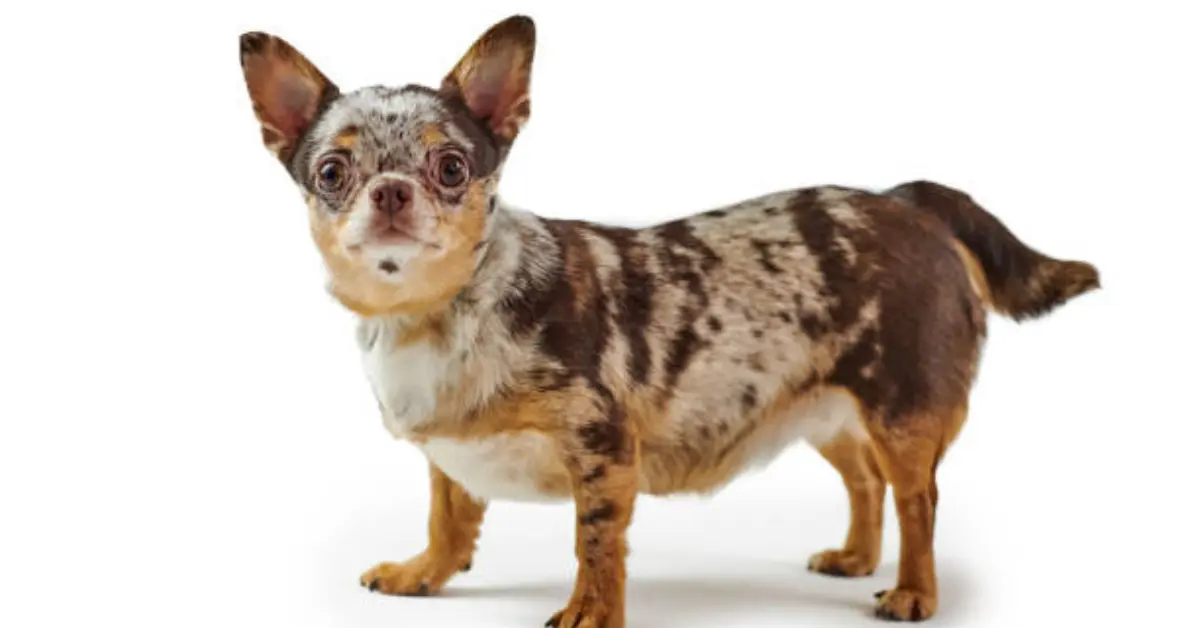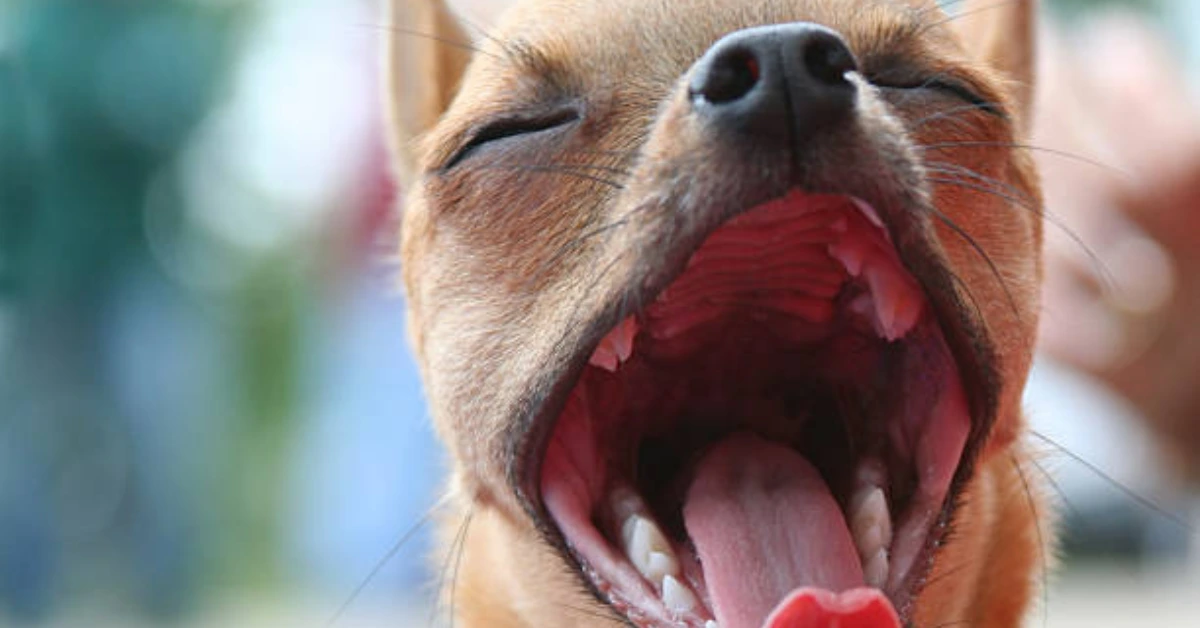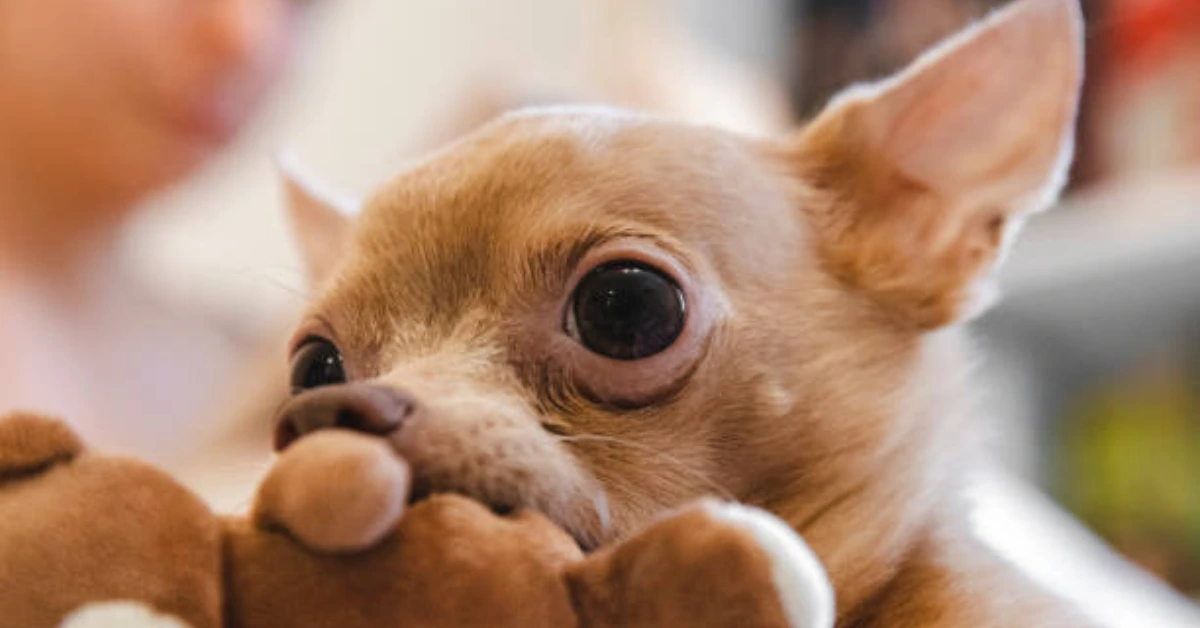Allergies affect 20% of dogs, and Allergies in chihuahuas can produce a wide range of bothersome symptoms. Many often, attempts to treat them are unsuccessful, and a Chihuahua may only get transient or limited relief. And while allergic reactions are difficult for this small breed, this might be upsetting for the owners.
Fortunately, if you are ready to put in the effort, a Chihuahua with allergies can show noticeable improvement.
Everything you need to know about identifying and managing allergies is covered in this section. You can complete most of these processes at home. Let’s get started so that your Chihuahua can feel better soon.
Advertisement
Types Of Allergies In Chihuahuas
Allergies, though they can affect any breed, can be divided into three primary categories for Chihuahuas:
Environmental
This includes components and allergens in the air that are present both inside and outside the home. The top of this list includes seasonal triggers including weeds, grasses, and pollen. Dust mites, a major contributor to indoor allergies, are also included in this.
Food
This includes anything that a dog consumes during meals and snacks. A food allergy to dog food additives is the most prevalent kind. The majority of dog feeds, except the best-selling brands, have artificial coloring, artificial flavoring, and/or chemical preservatives. Serious problems can arise from these chemicals.
This also includes low-quality fillers such as large amounts of grain, corn, soy, and by-products.
Lastly, a dog may experience a protein allergy, however this is far less common. Any basis, such as fish, beef, or even chicken, which is usually a very well-tolerated meat, can be used for this.
Contact
This is a reference to substances that come into contact with a dog’s body. Some toys, carpeting, plastic bowls, and surfaces treated with chemicals could all be the source of the problem.
Signs Of Allergies In Chihuahuas
It is noteworthy that a Chihuahua may exhibit one, multiple, or none of these signs. Reactions can also vary in intensity, come and go, and change over time. Symptoms include:
- desiccated skin
- Skin irritation
- rash
- warm areas
- lesions on the skin
- Chronic skin condition, or atopy
- Itching
- hair thinning
- Recurrent infections in the ears
- upset stomach
- throwing up
- Sighing
- Coughing
- eyeballs with blood shots
- teary eyes
- Itchy or uncomfortable behaviors, such as licking, gnawing, and scratching
Diagnosis Allergies In Chihuahuas
Knowing what is causing your Chihuahua’s allergies in the first place makes sense when it comes to treating them. Let’s examine the options since it’s not as simple as it seems.
Types Of Tests
Intradermal skin testing
Though not perfect, this is generally more accurate than blood testing. This test requires sedation, and the dog cannot get antihistamines or allergy drugs for at least one month, and occasionally longer, before the test.
This involves shaving off fur in a tiny region and injecting minuscule amounts of allergens just beneath the skin. The area will be monitored to see which allergens, if any, are producing reactions. Because the degree of a skin reaction is not always evident and various veterinarians will have varied viewpoints regarding what constitutes a real reaction, this diagnostic tool is reliable about 75% of the time.
Blood Test
These test a dog’s blood for antigen-induced antibodies. ELISA, or enzyme-linked immunosorbent test, is the most often used. All three types of allergies are checked for, however airborne triggers (dust mites, pollen, etc.) are more accurately detected by this method than food or contact. Despite its potential benefits, this test’s design was intended for human use, which means that false positives and unclear findings are common.
Testing At Home
You might be wondering if you can do a home allergy test on your Chihuahua. Of course, You can observe items that seem to aggravate or trigger symptoms from the comfort of your own home. Additionally, when you attempt to eliminate the most frequent offenders, you may monitor any progress.
Treatment Of Allergies In Chihuahuas
Eliminate Any Potential Allergens
As we mentioned before, reducing or getting rid of all potential triggers is essential to permanently cure allergies. Moreover, Chihuahuas may exhibit sensitivity to many stimuli. We’ll discuss ways to lessen or eliminate each of the three categories of allergy triggers because of this. Don’t automatically rule out any of these; instead, consider how each might apply to your Chihuahua.
1. Environmental allergens
These can also be referred to as seasonal, inhaled, or airborne allergies, and they can vary from season to season. Pollen, grasses, and weeds are among the airborne allergens throughout the spring and summer that could be harming your Chihuahua.
Ragweed can trigger allergic responses in the fall. Because people spend more time indoors during the winter, dust mites are a typical problem.
That being said, this also covers items like household cleaning supplies that you may use all year round.
The fix
Remove any potential allergens from the house
1. If you have central air conditioning, use high-quality filters and run the air conditioner or merely the fan. The MERV system (Minimum Efficiency Reporting Value) is used to grade HEPA filters, whereas the FPR (Filter Performance Rating) is used to rate other filter types. It is desirable to have a greater number because it will capture smaller particles.
Replacing the filter every 20 to 30 days is recommended if you want to effectively filter out allergens.
2. Take into consideration utilizing portable air filtering equipment if you don’t have central air. These stand-alone devices can be somewhat expensive, but if your Chihuahua suffers from severe seasonal or airborne allergies, they are well worth the cost. Make sure the appliance is the right size for the rooms in your house and that it is HEPA-certified.
3. Use a HEPA filtration vacuum cleaner regularly throughout your entire home, regardless of the flooring you have—carpet, laminate, tiles, or wood. This will filter the air as it passes through the machine in addition to collecting all of the particles on the floor.
4. Avoid leaving windows open, as this will negate all of your efforts to rid the home of allergies.
5. Implement a “no shoe” policy, requiring all visitors to remove their shoes as soon as they enter the residence. Store shoes high so that your Chihuahua can’t get to them.
6. To get rid of dust mites, wet-dust the house once a week. Did you know that mites are present in every dust? There are up to 1,000 mites and 250,000 excrement pellets in only 1 gram, or roughly half a teaspoon, which can also trigger allergic reactions. While wet dusting enables you to capture and get rid of dust, dust mites, and their droppings, dry dusting only pushes these pests around.
7. Use air fresheners and aerosol cleansers judiciously. It is recommended to keep your Chihuahua in a different room when using toxic cleaning products. Furthermore, using air freshener sprays excessively can aggravate Chihuahua’s breathing and/or eyes.
Do not let allergens touch your Chihuahua
1. Clean your Chihuahua with cleaning wipes every time he comes inside. This is true for both short trips to the bathroom and long walks. Use a wipe that is safe for people with allergies, like Earthbath All Natural Hypo-Allergenic Grooming Wipes.
2. Put paw wax between your Chihuahua’s paws and any allergens that might be on the ground. A good paw wax, like Musher’s Secret Paw Protection Wax, can also help heal paws that are very dry, cracked, or hurt in some other way. This is very true for many Chihuahuas because itching is one of the main signs of allergies. That’s why dogs chew on anything they can get to when they’re itchy. Usually, this means their paws.
3. Keep an eye out for open areas outside that may have been sprayed with chemicals to get rid of pests. Stay away from these areas.
When you get back inside, wash the dog’s paws. It’s best if you pick him up and bring him to the sink. Even though paw wax will keep out most weather, you should still wash the hands of any outdoor pet every time they come inside.
5. bath your Chihuahua and brush it on time. You should brush the coat at least once every three days and no more than once a day. Baths are usually given every three weeks, but you can give your Chihuahua baths up to three times a week until the symptoms go away if he needs an allergy shampoo to heal his skin and ease his symptoms. In Part 2, we’ll talk about more specifics: Take care of your Chihuahua if it’s itching or having other problems because of allergies.
6. Write down the days with a lot of pollen. This info should be in your neighborhood weather forecast. It is advised to avoid taking long walks on days classified as “high” if your Chihuahua has seasonal allergies. Attempt to walk your Chihuahua early in the morning or later in the evening on “medium” days, as pollen concentrations peak in the middle of the day.
2. Contact Allergens
touch allergies are caused by things that a Chihuahua comes into direct touch with. This is the least common type of allergy in dogs, but it shouldn’t be ruled out completely.
The main problem here is plastic bowls, which often show up as a nose that is too dry or loses its color. People may think that their pet’s nose color going away is because of their genes, but it’s often caused by a reaction to cheap plastics, even ones that aren’t BPA-free.
This can also mean fabrics like furniture, carpets, or even bed linens. If this is the case, skin reactions are likely to happen.
The fix
1. Don’t give your Chihuahua food or water in plastic bowls. For both food and drink, only use bowls made of stainless steel or ceramic. The Kek’s Stainless Steel Bowl Set for Small Dogs is a great example of a set of good bowls that are the right size.
2. Look at the fabrics in your home. Sometimes washing clothes with hypoallergenic detergent can help, but other times you will need to keep your dog out of certain areas or things you should change with less irritating fabrics.
If you think the wall-to-wall flooring is making the problem worse, tell your Chihuahua to rest or sleep in his bed and put down blankets that won’t irritate his skin.
Food Allergens
For about 20% of dog allergies, reactions to one or more food ingredients are to blame.
The fix
Reevaluate all of your meals and snacks. Look closely at all of your Chihuahua’s treats and big meals.
Tip: Stay away from
- corn, soy, wheat, grain, or by-products
- Anything that has beans, husks, mill run, or gluten added to it.
- PG (Propylene Glycol), TBHQ (Tertiary Butylhydroquinone), Glyceryl Monostearate, Phosphoric Acid, and BHA (Butylated Hydroxyanisole) are some of the chemicals they use as antioxidants.
- Some of the colors used are Blue 2, Red 40, Yellow 5 and 6, and 4-MIE.
Things to look for:
- No artificial colors or chemical preservatives
- No grains at all
- No corn, soy, or waste.
- Food naturally kept going. You can do this with a mix of vitamins, like vitamin C (ascorbic acid) or vitamin E (tocopherols), or you can use rosemary oil.
- Extra chemicals that are good for your dog, like omega 3 to support healthy skin and antioxidants to boost your dog’s immune system.
- Keep in mind that rice is usually fine and good for you because it doesn’t have gluten like wheat does.
Handle Your Chihuahua’s Itching and Other Allergy-Related Problems
Treating symptoms is just as crucial as reducing or eliminating potential allergens when treating Chihuahua allergies.
And remember that you need to complete both tasks. Your Chihuahua may continue to experience symptoms for weeks or even months if you only eliminate causes. This is because certain conditions, like rashes or dry skin, might take a long time to go away on their own.
Similarly, your Chihuahua may see only patchy alleviation if you focus just on treating symptoms without addressing their underlying causes. It will be difficult to overcome allergies if a puppy or dog is still in contact with them often.
Treatment at the vet vs. at home:
Most owners find it upsetting to learn that their pet needs to see the vet. Not every illness, though, can be managed at home. You may use Antihistamines and/or anti-inflammatory drugs to treat moderate to severe allergies.
A veterinarian visit is necessary if your Chihuahua exhibits significant swelling, cracking, deep sores, lesions, or pus-like discharge on its skin, or if it has respiratory problems, such as moderate to severe wheezing.
Nevertheless, there are plenty of things you may perform at home to assist your Chihuahua in getting well from common problems including hot spots and extremely itchy skin.
Let’s see what can be helpful now:
1. Lotions
If your Chihuahua is suffering from allergies to the point where their whole body is raw, itchy, or in need of assistance, a lotion can be a better option than a spray. This is incredibly calming and healing when applied to large irrigated regions.
The best one that we suggest is ReQ (see “omega fish oils” below). It addresses a wide range of problems and functions on multiple levels. It relieves hot areas, extreme itching, and excessive dryness (of the body, paws, and/or nose), and even aids in thinning coat restoration.
Aloe vera, Manuka honey, coconut, hemp seed oil, olive oil, and shea butter are all soothing ingredients that aid in itch relief, hydration, and repair. Vitamins A, B, C, and E are also present, and they boost collagen, protect immune system function, and fortify the skin’s outer layer.
2. Sprays
Topical sprays are great because they can provide a Chihuahua with fast, focused relief.
Hot Spot Spray: This is meant to cool sores, welts, or other locations that are extremely irritated quickly. An all-natural spray works best because the skin can be broken open. Skin can recover more quickly and easily with the help of substances like aloe vera and tea tree oil.
There are two kinds of anti-itch spray: medicated and non-medicated.
For severe skin itching and potential edema, medicated sprays work best. Look for one that has hydrocortisone or a hydrocortisone and lidocaine combo. Hydrocortisone helps lessen inflammation and works fast to relieve itching. A numbing medication called lidocaine may be helpful if a Chihuahua has extremely painful and inflamed skin.
For skin irritations, rashes, itching, and other problems, organic sprays can also be quite helpful. This is an excellent option if your Chihuahua isn’t quite so terrible that you need a medicinal spray, or you should apply it to any body parts where your Chihuahua might gnaw on the product or otherwise consume it.
Those that have baking soda and oatmeal in them usually work nicely.
3. Omega 3 Fish Oil
Seldom will an omega supplement by itself resolve severe skin problems or completely stop allergy-related irritation. But this might be a bonus when you are trying to treat your Chihuahua. Skin healing is a well-known benefit of fish oil. It can aid in the robust and healthy regrowth of fur if your Chihuahua has also experienced coat problems.
Choose the supplements you give your Chihuahua carefully. Fish-derived omega is not nearly as effective as flaxseed omega, which is completely different. Furthermore, since farmed fish can contain up to 15% vegetable oil, which lowers the actual omega-3 levels, the fish should be wild rather than farmed.
A good option that’s simple to incorporate into your Chi’s diet is liquid fish oil, which you should give to him at least once a day. Chihuahuas only require roughly half of a pump; make sure to thoroughly combine this with the food. Because most dogs enjoy both scent and flavor, if the mixture isn’t well-blended, the dog may only mouth the parts that are drenched in oil.
4. Allergy Shampoo
One highly useful tool for treating allergic skin reactions is shampoo. For the best relief and healing, pick a nice one, lather over your Chihuahua’s entire body, and let the product sink in for a full ten minutes.
A Chihuahua should typically get a wash once every three weeks, but if they have allergies, you can give them a good shampoo every three days.
You should observe relief in two weeks as long as you’re also attempting to avoid triggers. After that, you can shampoo your Chihuahua once or twice a week until the problems are completely resolved.
1. While there are several excellent dog allergy shampoos available, Moosh is our 1 pick since it’s simply the best. It is incredibly effective for severe dry skin, hot patches, and itching. Additionally, it treats dandruff, flaking, peeling, and even fungal or yeast infections.
Bentonite clay, argan oil, neem oil, shea butter, vetiver oil, aloe vera, coconut oil, sunflower oil, and olive oil are all found in most.
2. Earthbath is a good substitute because it is a premium range of shampoos that address particular problems that a dog could be experiencing.
Their oatmeal and aloe mixture works wonders for allergies; since Chihuahuas have delicate skin, we suggest using this shampoo for ongoing maintenance. Additionally, they have an incredibly cooling shampoo with eucalyptus and peppermint for dogs with sensitive, painful skin. Their Tea Tree and Aloe Vera blend works wonders for hot spots or just itching problems.
Additionally, their oatmeal and aloe conditioner work well with any of their shampoos.
Constant Monitoring and Assistance
You won’t want to overlook this since you’ve put a lot of effort into eliminating or at the very least reducing any potential allergy triggers and treating your Chi’s skin with some of the greatest treatments. Dogs can sometimes outgrow allergies, but not always. Thus, you should continue to be vigilant.
Here are the top 3 ways to prevent allergies in your Chihuahua:
1. Once you’ve discovered some delicious goodies and a decent kibble, stay on course. Never let anyone feed anything other than this to your Chihuahua. Make sure you have an adequate supply of supplies to avoid running out.
Good food and nutritious treats aren’t always easy to get in your neighborhood pet store or supermarket. Therefore, consider shipping times while placing an online order.
2. Continue doing this once you’ve removed all allergens from the house. Maintaining a rigid routine, such as vacuuming every Saturday and checking the air filters on the first of each month, is beneficial to most owners.
3. Make sure your Chihuahua receives regular grooming. Maintaining robust and healthy skin on your Chihuahua will make your puppy or dog more resilient to future allergy attacks.
Let’s examine the routines that You will need to follow:
- Paw wax: useful all year round, but particularly beneficial in the summer and winter. Once a week, massage the paw pads and the spaces between them. Use once daily to address paw problems.
- Nose balm: Dogs’ noses are delicate organs that you will need to keep in good condition. Snout Soother is an excellent balm for preventing chapping and drying out. For maintenance, apply once a week; for nose problems, apply up to three times a day.
- Good conditioners and shampoos: Avoid waiting for issues to arise before using a moisturizing shampoo. The previously stated Earthbath will keep Chihuahua’s skin and coat incredibly healthy and prevent new skin allergy reactions if you bathe your pet every three weeks.
- Coat sprays: An additional useful tool for maintaining the health of Chihuahua’s skin and coat. Applying a leave-in spritz will reduce friction, repel debris, and offer protection from the outdoors. One that keeps your Chihuahua smelling amazing, like Nootie Daily Spritz – Warm Vanilla Cookie, is an extra benefit. Every three to four days, spritz the coat.
- You can use grooming wipes as frequently as daily, in between showers.
- At a minimum, brush the coat every three days.
Last Word
Allergy symptoms might appear simultaneously or be mistaken for symptoms of other conditions. Therefore, without veterinarian advice, never try to diagnose your dog. Prepare for your pet to undergo a thorough diagnostic examination to rule out further reasons for scratching and skin issues. When you identify an allergy, your family needs to carefully follow your veterinarian’s instructions to effectively ease your pet’s discomfort.
YOU MAY ALSO LIKE:
Are Chihuahuas Hypoallergenic?
Chihuahua Color Changes. Skin, Nose, and Coat
Advertisement

